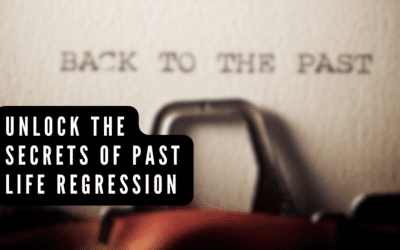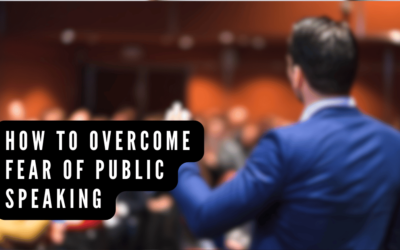Symbolic Integration Workshop: Demo #1: The Get A Gift Process
Acknowledging the amazing work of the many teachers that I have had and ALL of the amazing knowledge and techniques that form the building blocks for this process, this is the first micro process in the family of techniques I created. I call these techniques Symbolic Integration Techniques. This first technique is called the Get A Gift Process. The essence of this process involves helping the client orient their attention towards their inner healing resources and then inviting their deep inner intelligence to create a gift, in the form of an image, symbol or metaphor. Once the client accesses their gift, then we help the client integrate the gift into their body and into their life.
The Get A Gift Process
- Direct and absorb the client’s attention inwardly
- Associate the client to their inner healing resources.
- Invite the client’s inner healing resources to give the client a gift.
- Help the client express that gift in the form of an image, symbol or metaphor.
- Invite the client to integrate the gift into their life and then to bring the new resource into the area of their life where the client would most benefit.
Symbolic Integration Workshop Demo #2: Let It Go, Get A Gift
This is the second building block for my Symbolic Integration Techniques. I simply call the process “Pull It Out, Get A Gift.” And the name of the process pretty well describes what we do. First we find the client’s representation of the problem state and help them turn it into a symbol or metaphor. Next we help the client change the symbol in a way that makes sense for the client. In this case, the client wanted to “roll the boulder down the side of the mountain.” So I helped her do that. Then we do the steps of the Get A Gift Process and then help the client integrate the healing resources they have accessed. This process requires some flexibility but can be summarized in four big chunks like this:
1. Find and Symbolize The Present State => 2. Externalize and Change The Present State Symbolically => 3. Associate The Client To Their Inner Healing Resources To Get A Symbolic or Metaphoric Gift => 4. Integrate The Symbolic Gift Back Into Their Body and Mind.
I say that the process requires some flexibility because we are working with the client’s representations, and as much as possible it is best to avoid putting too much of your own ideas and map onto the client’s experience. That means you don’t know how the present state is represented until the client tells you. You don’t know how the client feels the symbol that represents the present state should change until you help them discover how they would like to change it. You don’t know what kind of symbolic healing gift the client is going to discover from their own inner wisdom and you don’t know how they will want to integrate that new resource in their life until they tell you.
That means your main skills become skills of connection, elicitation and gentle guiding…
Symbolic Integration Workshop Demo #3: Final Demo With Two Spacial Anchors
It became apparent that I was not going to be able to teach the entire Symbolic Integration Protocol during a two hour class. So I gave the class the option of seeing the next building block or seeing a demonstration. The class voted to see a demonstration of the process, which meant that I had to skip teaching a half dozen building blocks to get right to a variation on the main process. Again, the process requires a fair amount of flexibility because it is a dynamic process that requires you to skillfully elicit and respond to what the client gives you in the moment.
This is transformation from the inside out!
Generally the first step of the protocol is to create a spatial anchor for an observer state.
Next, help the client make a map of the emotional energy that the client is experiencing as they think about the present state. Have the client scan the area in and around their body and then report what kinds of body sensations they become aware of as they think about the present state.
As the client becomes aware of a body sensation: a tingling, a tightness, a pressure, a warmth, etc, you create a spatial anchor for that experience. If they have pressure in their head for example, I write “Head” on a piece of paper and have the client place the paper on the ground where they feel like it belongs. It is very important to allow the client to choose the placement of the spatial anchor as the goal here is to help the client create a representation of their inner reality.
When I do the full version of this process, I continue to elicit the client’s inner representations of the present state until there is nothing left in the client’s awareness of the present state: it is now completely externalized and mapped out on the floor in front of us.
Simply allowing the client to externalize their inner representations and hold a space for EVERYTHING will generally leave a client feeling quite calm, which helps the client access their inner healing resources from the observer space.
Next, invite the client to stand in the space for the observing self and ask the client, “Which part of you is ready to heal first?” or some other version of the question that presupposes : 1. Healing will happen now. 2. You are ready to make that change now.
Then do the “Pull It Out, Get A Gift” process on the part that is ready to heal (see description above). Continue to repeat that process until the gift has healed completely.
I should say here that there are several other Symbolic Integration processes that I may use here depending on the client’s responses. The most common one is what I call the “Gift Exchange” where I will have two parts exchange symbolic or metaphoric gifts until integration happens. My experience is that if you simply have the client move back and forth between parts exchanging healing gifts long enough (as long as one part has ANY level of resourcefulness) that the two symbols will eventually spontaneously integrate. (I have spent hundreds of hours at this point testing this one idea and I have yet to see an exception.)
However, you can dramatically speed up the speed of the integration through the use of excellent stacking of presuppositions, by purposefully directing your own body language and by leveraging the power of your own internal representations and the power of your belief, imagining and believing that your client is already completely whole.
There is more to say, but I will let the demonstration speak for itself.
5 Extreme Shortcuts For Rapid Belief Change
Before you watch the demos, let me give a little context for the presentation. I wish I had several days to teach this instead of only 50 minutes. But I think we covered a lot of content in 50 minutes.
Beliefs touch every area of our lives. If you listen to a client describe their present state, before long, they will start to share limiting beliefs. “I am not good enough. I don’t deserve to succeed. It just isn’t possible to have what I want. I can’t be happy.”
When a client is limited in achieving what she wants, there is a good change there is a limiting belief in the mix. The three main areas that people will find limitations that drive them to seek professional help: health, finances, and relationships.
It is easy to help a client change a belief, if you know what the basic structure of a belief is like.
So…
There are many ways to define a belief. What follows is my simplest definition. I have an advanced definition that I teach my students after they have mastered the basic definition and learn to work with it.
Thought Evidence x Emotional State(s) = Belief
We can further break down the formula like this:
Thought Evidence = What a client sees, hears, and says to himself in his imagination. It also includes memories, symbols and metaphors that the client uses to find thought evidence around the belief statement.
Emotional States = 1. The generalizations or word labels that a client uses as a shorthand to describe their inner experience. “I am sad. I am happy. I feel afraid.” These word labels are a shorthand for the client’s inner experience. When a client uses a gesture or a facial expression or their voice tone to emphasize a particular word that describes a state, it becomes particularly important. Often this is referred to as “analogue marking.” Often I describe the same concept by calling these emphasized word labels as “Hot Words.”
States = 2. The body sensations that the client is experiencing. These are particularly important because they are pre-verbal and therefore one step closer to the client’s direct inner experience (words are a clumsy representation for what we are actually experiencing which is what we try to convey with our voice tone and our gestures with our emphasis). A body sensation might be experienced as pressure, heat, tingling, weight, etc. Body sensations can occur inside of the client or around the client’s personal space. It seems that a client’s imaginal representation of the world is holographic and, therefore, a client represents reality both in and around herself, sometimes extending several feet (or much more) around the body.
When describing states, a client will often gesture towards or look at what they are unconsciously imaging in space. These type of eye movements or gestures have been called Submodality Accessing Cues or Behavioral Manifestations of An Internal Representation and they are VERY IMPORTANT to train yourself to notice.
Let’s go back to the formula for a minute.
Thought Evidence x Emotional State(s) = Belief
The state someone feels multiplies the effect of the thought. And changing the intensity of the emotional energy held around a thought can almost instantly change the intensity of a limiting belief. It has been my experience that the easiest way to help a client change their limiting beliefs is to help them change the emotional states around the belief.
When you multiply something by zero, the whole equation zeros out. And that is exactly what I see happen with my clients when the emotional energy RAPIDLY shifts during a session.
You can change beliefs through thought reframing and it does work — sometimes lightning fast — and my personal preference is to first re-anchor or reframe the emotional state energy because of how quickly things begin to change for the client. AFTER the emotional state energy has changed, then I start the thought reframing process and it goes smoothly.
To change a limiting belief, there are at least 8 macro steps that are helpful to follow:
- Identify the limiting belief or its evidence in the client’s non verbals.
- Elicit at least one aspect of client’s representation of the thought evidence or emotional states
- Re-anchor or reframe that aspect
- Test your work to verify that the belief has changed.
- (Go back to step 1 if the belief has not completely changed).
- Help the client identify new meanings.
- Link those new meanings to the client’s identity
- Generalize those meanings beyond the client’s identity and future pace.
Due to the constraints of the class time, we were not able to discuss or demonstrate all 8 phases of the belief change process. Instead the demos and class focused primarily on the first four phases. Having said that, it still amazes me that when the emotional state(s) are rewired through anchoring or reframing, often times, the client will spontaneously reorganize their meanings and associations related to the limiting belief on her own.
It is my belief that to speed up the pace at which belief change happens, find change rituals that RAPIDLY change the client’s state. Here are the five rituals I planned on demonstrating (time limited us to demonstrate and practice two):
1. You can change the state(s) of a limiting belief by mapping across the internal representation of the body sensation(s) related to the emotional state(s) and changing them. This is what I did in Demonstration #1.
2. You can identify the state(s) attached to a limitation and you can re-anchor the states with ANY process that creates an integration of anchors or what some people call a collapse. I give one simple example of how to integrate states in the second demo. In Demonstration #2 you can watch me observe the non verbal response of the client, create a spatial anchor for the present state, create dissociation using space, body language and physiology, Find a Hot Word, Gesture and Physiology and then Integration of States (anchor collapse).
3. You can observe the eye movements and body posture that a client accesses when a client enters a state and then you can help the client change their eye movements and body posture and a client will frequently enter into a different state and begin to feel differently about their thought and OFTEN the representation of the thought evidence will begin to change.
4. You can help the client anchor in a change to their breathing and vision as they think about the thought and often the state anchored to the belief will change in minutes. The goal is to move the client to a state of deep breathing and peripheral vision.
5. First elicit the client’s internal representation of Deep Inner Wisdom or a Higher Power, depending on the client’s belief system. Then Elicit the internal representations of the body sensations related to the limiting belief. Invite the client to send their Deep Inner Wisdom or Higher Power the representation of the body sensation(s) until they heal or change. I call this process Into The Divine and I teach a multi-day workshop on several processes that I have created around this. This is FAST and DEEPLY transformational work.
Demo #1: Leveraging Internal Representations of Body Sensations To Create Belief Change
Once you help the client become aware of her internal representation around the body sensation, you have many choices about what to do. Often, I find it EXTREMELY effective to simple ask the client to become aware of the deep healing wisdom or intelligence that they have inside them and to ask this wisdom, “What should I do to change this now?” If I had more time for this particular demo, I would have continued with the process until the second body sensation dissolved and then would have moved down to phases 5-8 in the belief change process.
5 Extreme Shortcuts For Rapid Belief Change Demo #2: Change The Anchored State Using Spatial Anchors.
Never underestimate the power of a simple anchor integration (AKA collapse). After demonstrating this technique to the class, one woman came up to me and said that she felt a VERY OLD and VERY DEEP limiting belief completely dissolve in less than five minutes by doing the exercise I demonstrated in here. Simple can be POWERFUL. Again, if I had more time for this demo, I would have continued re-anchoring her state the state reached a zero on a zero to ten scale, where zero represented no emotional energy. Then I would have proceeded through the 8 phases of belief change.


